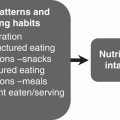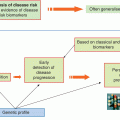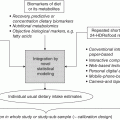20 Judith Buttriss British Nutrition Foundation To be of real use in a public health context, the findings of individual nutrition studies need to be rigorously assessed, considered in the context of the wider peer-reviewed literature and transformed into guidance that can steer individuals and those who advise them (e.g. health professionals and educators) towards healthier diets and lifestyles. To be effective and of value, the communication of nutrition principles should be based on robust evidence, set in the context of everyday life, consistent, timely, repeated over time to increase understanding and adoption, and in a form that will be relevant, accessible and understood by the target audience. The benefit of getting this right is considerable. In the UK, for example, two-thirds of adults and almost a third of children are overweight or obese, and ill health associated with obesity and overweight is costing the NHS more than £5 billion each year. Furthermore, poor nutrition has a role to play in the aetiology of a number of chronic diseases, including cardiovascular disease (CVD), type 2 diabetes and some cancers, as well as conditions such as anaemia and dental caries. A large European survey of 16 000 people (age 15 years and over) conducted in 2003 showed that advice from health professionals was an important source of information, but the media was also of considerable importance (Figure 20.1). Over the past decade or so, media channels have become more diverse and in just a couple of decades, information exchange has been transformed by the internet. While this development brings with it massive opportunities for knowledge transfer, it also has its challenges, not least the fact that new research is in the public domain almost instantaneously, sometimes before it has even been peer reviewed, and to the untrained eye in broader terms it is often not clear what is good science and what is flawed opinion. Figure 20.1 European Union citizens and sources of information about health. Reprinted from European Opinion Research Group, European Union Citizens and Sources of Information about Health, March 2003. © European Union, 1995–2014. The impact and reach of the internet are now huge. Worldwide in 2012 there were over 2.4 billion internet users (www.internetworldstats.com/stats.htm) and the penetration in different parts of the world is shown in Figure 20.2. Figure 20.2 World internet penetration rates by geographical regions, 2012. Data from http://www.internetworldstats.com/stats.htm. In Great Britain in 2012, according to the Office of National Statistics, 80% of households had internet access, almost exclusively via broadband, compared to less than 10% in 1998, and 67% of adults used a computer every day. The highest internet usage was in London (88% of adults) and the lowest in Northern Ireland (77% of adults), with all regions showing an increase since 2011. Men (87%) were slightly more likely to use the internet than women (83%), and 15% of adults had never used it. Figure 20.3 shows usage by different age groups. Figure 20.3 Internet users by age group and sex, 2012. Data from Office for National Statistics licensed under the Open Government Licence v.1.0, http://www.ons.gov.uk/ons/rel/rdit2/internet-access-quarterly-update/2012-q3/stb-iaqu.html. The nature of internet usage in Britain is shown in Table 20.1, which reveals that the most common use is finding out about goods and services (77%), followed by social networking (57%) and using services related to travel and accommodation (57%). Use of social media was slightly more common in women (60%) than men (54%), and was almost universal in 16–24-year-olds (91%) and also commonplace in 25–34-year-olds (76%). The internet is used to search for health-related information by 42% of adults (51% of 25–34-year-olds). Table 20.1 Internet activities by age group and sex, 2012. Data from Office for National Statistics licensed under the Open Government Licence v.1.0, http://www.ons.gov.uk/ons/rel/rdit2/internet-access—households-and-individuals/2012-part-2/stb-ia-2012part2.html. Base: Adults (aged 16+) in Great Britain. A major change has been the escalating use of social media, especially among younger people. In 2012, 48% of all adults, irrespective of gender, used a social networking site, with a third of all adults having accessed sites through their mobile phone. Social networking was the most popular internet activity in 16–24-year-olds, with 87% having used a social networking site in 2012. This was the first time that emailing had not been the most popular internet activity in any population group. However, social networking is not exclusively used by younger age groups (Figure 20.4). An EC-funded project (www.foodrisc.org) has compared food crisis coverage by social and traditional media routes and has found some interesting differences that would be worthy of further consideration by researchers. Figure 20.4 Social networking by age group in the UK, 2012. Data from Office for National Statistics licensed under the Open Government Licence v.1.0, http://www.ons.gov.uk/ons/rel/rdit2/internet-access—households-and-individuals/2012-part-2/stb-ia-2012part2.html. At the British Nutrition Foundation (BNF), a variety of different approaches are used, often in combination, to disseminate the findings of research projects to others in the nutrition field and to communicate with school children, their teachers, health professionals and the general public. These approaches range from ‘traditional’ published reports and peer-reviewed papers and conferences to websites, internet-based resources for schools, interactive eSeminars and social media approaches. The various case studies in this section illustrate different approaches to knowledge transfer and communication. These days it is important to be mindful of the challenges faced in the identification of a ‘diet fit for the future’ – a healthy, sustainable, affordable yet environmentally low-impact way of feeding the world’s population now and in the light of its projected rise from the current 7 billion to over 9 billion by 2050. An unprecedented confluence of pressures has been described whereby a growing and in some cases increasingly prosperous global population, alongside increasing demand for limited resources and the urgent need to address environmental challenges such as climate change and changing weather patterns, means that food security is seriously and increasingly threatened. Much of the discussion has focused on greenhouse gas (GHG) emissions associated with food production and the contribution from meat production and dairying has been highlighted. These protein-rich foods are features of Western-style diets and as such make a substantial contribution to the intakes of a wide range of essential nutrients. It is therefore important to understand the impact on overall dietary patterns and associated nutrient intakes if consumption levels fall, as well as the impact from a sustainability standpoint. From a nutritional perspective, the initial knee-jerk reaction of simply eating less meat is already being replaced by a more sophisticated debate that is now considering whether a healthy diet, as currently framed by food-based dietary guidelines, can also be a sustainable dietary pattern now and in the future. There are some important questions that need to be addressed in order for a clearer picture to emerge. For example, it is as yet uncertain which dietary choices consumers would make if their consumption of these foods were to be reduced, what effect these choices would have on their health and on the sustainability of the food supply, and which groups of the population or individuals within households would be most vulnerable, recognising that there are demographic changes already underway associated with an ageing population. Recent surveys from the UK’s Global Food Security programme and the consumer organisation Which? suggest that consumers are open to receiving more information about the options and trade-offs faced in meeting the challenges of feeding the global population now and in the future. Dietary surveys and modelling, using food composition databases linked to reference nutrient intakes, have an essential part to play in determining both the impact of the types of change in diet that are likely to be necessary if food security is to be achieved for future decades, and how the nutrient needs of a growing global population can best be met from the resources available. The BNF contributed to the debate through various articles and a themed issue of the journal Nutrition Bulletin. It has been recognised for some time that there are periods of fetal and early-life development when the balance of nutrients is particularly important – these are the ‘critical windows’ in an offspring’s development during which his or her future health and development may be ‘programmed’. To explore the potential for nutrition during early life to shape future health, a BNF Task Force was established under the chairmanship of Professor Tom Sanders, which reported in May 2013 (Nutrition and Development: Short- and Long-Term Consequences for Health). The Task Force considered the effect of nutrition on the development of the various organ systems and also the extent to which current recommendations about nutrition in pregnancy and during early life are being followed by the population in the UK and elsewhere. A key finding was that there is now unequivocal evidence of the biological link between the health status of women and conditions such as obesity, type 2 diabetes and cardiovascular disease in their children in later life. Almost half of women of child-bearing age in England are overweight or obese and this can affect the environment in the womb, the baby’s birth weight and subsequent health in early life and on into adulthood. Maternal obesity increases the risk of complications in pregnancy, including pre-eclampsia, which can result in a small, growth-retarded baby. Evidence suggests that poor fetal growth, especially if followed by accelerated growth in infancy, may be associated with long-term adverse consequences for health. Poor fetal growth may also affect kidney development, making offspring more sensitive to the blood pressure-raising effect of salt and therefore increasing their risk of cardiovascular disease in later life. Obese women are also more likely to have gestational diabetes, which increases the fuel supply to the baby. This can increase the likelihood of the baby having a very high birth weight and developing obesity. It also predisposes the child to developing type 2 diabetes in later life. Communications activities associated with the conference to launch the report stressed the food industry’s responsibility in shaping the food supply. They also emphasised the critical role of health professionals in alerting women to the risks – to both themselves and their babies – associated with being obese during pregnancy, as well as supporting women planning a pregnancy and after the birth in establishing and maintaining a healthy weight. To help with this, a website-based four-week planner for women of child-bearing age was produced and promoted via media activity, alongside website-based meal planners and tips on healthy eating and physical activity for women planning a pregnancy, as well as for those who have recently had a baby and want to get their figure back (http://www.nutrition.org.uk/healthyliving/healthylifeplanner). To help midwives keep up to date on the importance of good nutrition, an online training course was produced with the Royal College of Midwives. To reach women directly there is a Nutrition4Baby section to the BNF website, which uses social media routes to deliver information on a weekly basis to women during their pregnancy. The press information was picked up by breakfast television and national and regional newspapers, as well as trade and health professional publications. The headlines generated focused on the risks of maternal obesity. Neural tube defects (NTD, e.g. spina bifida and anencephaly) annually affect an estimated 320 000 newborns worldwide (4500 affected pregnancies per year in Europe) and folic acid supplementation and fortification of the maternal diet during the peri-conceptional period form an effective primary prevention strategy. In the UK, all women of child-bearing age are advised to take a daily supplement of 400 μg of folic acid and to consume a folate-rich diet. Nevertheless, compliance is generally poor – one UK study showed that less than 55% of women reported ever taking a folic acid supplement and uptake of the advice is adversely affected by lower education level and socioeconomic group. Furthermore, many pregnancies are unplanned. Countries such as Canada that have mandated folic acid fortification of wheat flour as a means of delivering the nutrient report an average 46% reduction in NTD-affected birth prevalence (see Table 20.2 for other examples). Table 20.2 Examples of the impact of global folic acid fortification on neural tube defect (NTD) prevalence. Folic acid fortification of bread flour was introduced in the USA in 1998 and more than 70 countries around the world have followed suit, but to date no European country has taken this step. The science supporting peri-conceptional use of folic acid as a preventative measure for NTD was reviewed some years ago by the Scientific Advisory Committee on Nutrition (SACN), which recommended fortification of flour in the UK. In making this recommendation, SACN noted a concern about the risk of folic acid supplementation masking B12 deficiency and its sequelae in some groups (e.g. older people), by ameliorating the anaemia that B12 deficiency produces but allowing neurological damage to progress. There has also been concern that folic acid fortification could cause cancer and investigation of this has delayed a decision about its use in the UK. Folate is necessary for gene stability and so can be expected to protect against cancer in healthy individuals. However, it is also important for cell replication throughout life and there have been suggestions that in individuals with early cancer, folic acid supplementation may, over time, promote cancer growth and proliferation. Three meta-analyses have been published over the past couple of years, the most recent in early 2013 by Vollset and colleagues, and a decision on fortification from the UK’s Chief Medical Officer is expected in early 2015. Recognising the challenges already experienced in encouraging women of child-bearing age to comply with advice on folic acid supplementation (despite promotional campaigns targeting health professionals and women) and also the reality that peri-conceptional usage is lowest in at-risk groups such as teenagers, low-income groups and obese women, folic acid fortification of commonly consumed foods may be the most efficient way to increase folate status in such women. The 2011 census revealed that 16.4% of the population of England and Wales (1 in 6 people) is now over the age of 65 years, the highest percentage ever recorded (http://www.ons.gov.uk/ons/rel/census/2011-census/population-and-household-estimates-for-england-and-wales/index.html), making this a large and expanding population group. Furthermore, in 2011 there were 430 000 residents in England and Wales aged at least 90 years, compared with 340 000 in 2001 and just 13 000 in 1911. People over the age of 65 are very heterogeneous in terms of their health and their needs. The improvement in life expectancy in the UK, which has been increasing by around 2 years per decade, is being matched in many other parts of the world (Figure 20.5) even where poverty is rife, but crucially, increases in healthy life expectancy are not keeping pace, either in the UK or elsewhere. We are living longer, but much of this extra time is being spent in ill health (Figure 20.6). This demographic trend poses many challenges for society and our healthcare systems. Figure 20.5 Global life expectancy at birth by demographic region, 1950–2010. Data from Population Division of the Department of Economic and Social Affairs of the United Nations Secretariat. Figure 20.6 Life expectancy and healthy life expectancy at birth in the UK, 1981–2001. Data from Office for National Statistics licensed under the Open Government Licence v.1.0 (http://www.ons.gov.uk/ons/rel/disability-and-health-measurement/health-expectancies-at-birth-and-age-65-in-the-united-kingdom/index.html). To investigate the potential of diet and lifestyle to improve healthy life expectancy, in 2005 BNF established a Task Force on nutrition and healthy ageing, under the chairmanship of Professor John Mathers, the report of which was published in 2009. The genes we inherit at conception set the trajectory and context for future health, but thereafter nutrition in the womb and throughout life, together with overall lifestyle, influences the impact of our genetic inheritance. Furthermore, time continuously pushes the pendulum towards ill health and disability. The Task Force adopted a life-course approach to the study of ageing, considering how each organ system ages over time and the evidence for nutrition and/or lifestyle having the potential to hold back the effects of time. Chapters in the report (Stanner, Thompson and Buttriss 2009) cover teeth and the oral cavity, bones, joints, skeletal muscle, skin, the brain, the cardiovascular system, the immune system, the gut and the endocrine system. The Task Force found evidence of protection against chronic disease; preservation of immune function, digestive health, cardiovascular health, functional ability, bone health, oral health and vision; benefits for cognitive function, mental health and well-being; ability to minimise risk of weight loss, under-nutrition, low nutrient status and deficiency diseases; and capacity to aid recovery from illness. Once the science had been established, the Task Force moved on to consider the public health implications and all the nutritional information was drawn together, by organ system. This collated information was used as the basis of the consumer communications work associated with the launch of the report. A conference was held for researchers and health professionals, the main target audiences for the report, and articles were published in a variety of journals targeting specific heath professional groups, although efforts to reach a wider audience were undertaken primarily through the media (the findings were published on the front page of the Daily Express and in five other national newspapers and a number of magazines) and via BNF’s website. To encourage take-up of the messages a poster, tips, recipe ideas and fact sheets were produced, and images of ‘healthy’ food baskets were provided. These can be found at http://www.nutrition.org.uk/healthyliving/healthyageing. Between January 2010 and April 2013, the poster attracted 6019 hits, the top tips for healthy ageing 17 512 hits and the recipes 7813 hits. Of course, the national media coverage of the messages reached far greater numbers. Articles were also produced for a range of consumer magazines with different key audiences and talks were given to specific groups such as those running care homes. These targeted activities enabled the information to be presented in an appropriate format for different groups.
Translation of Nutrition Research
20.1 Importance of the translation of nutrition science
Communication channels
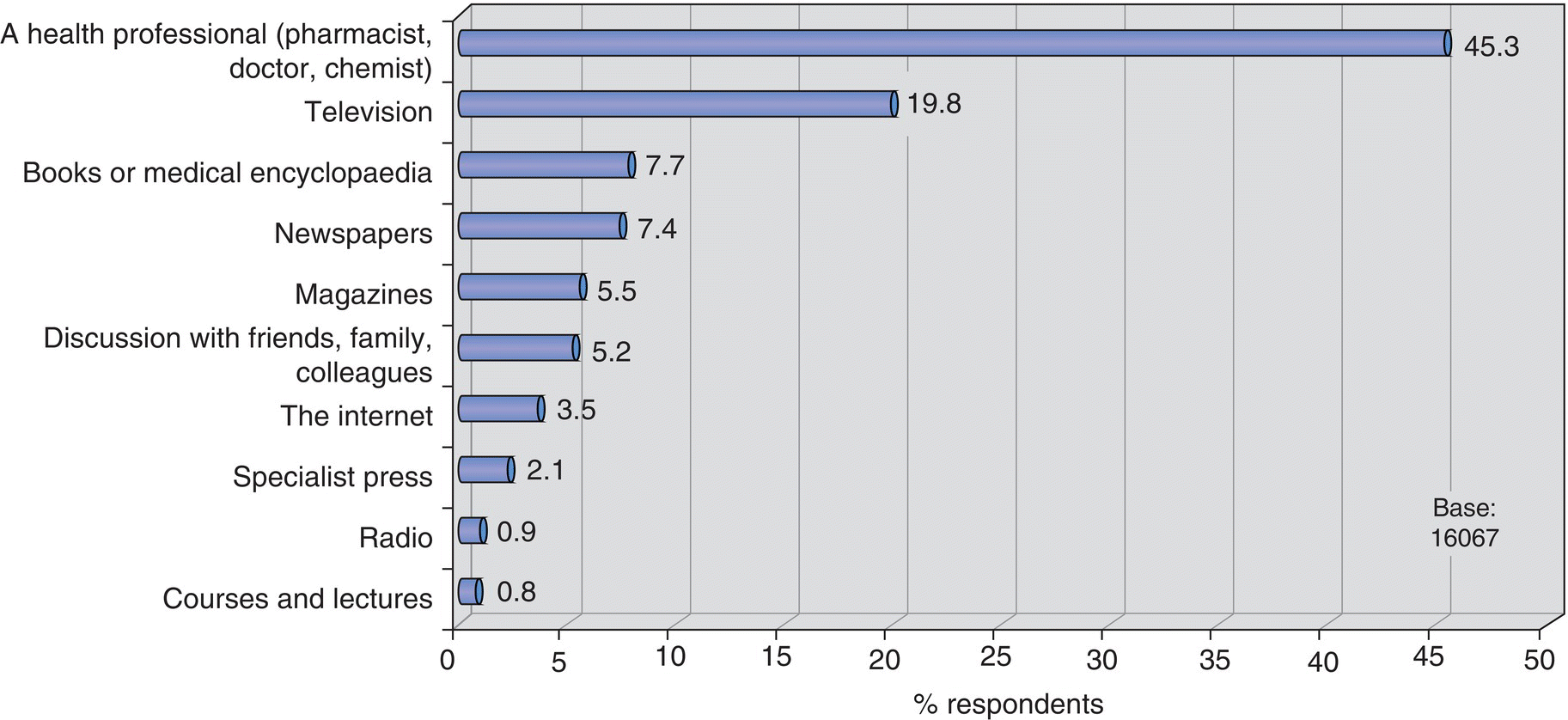
Internet usage
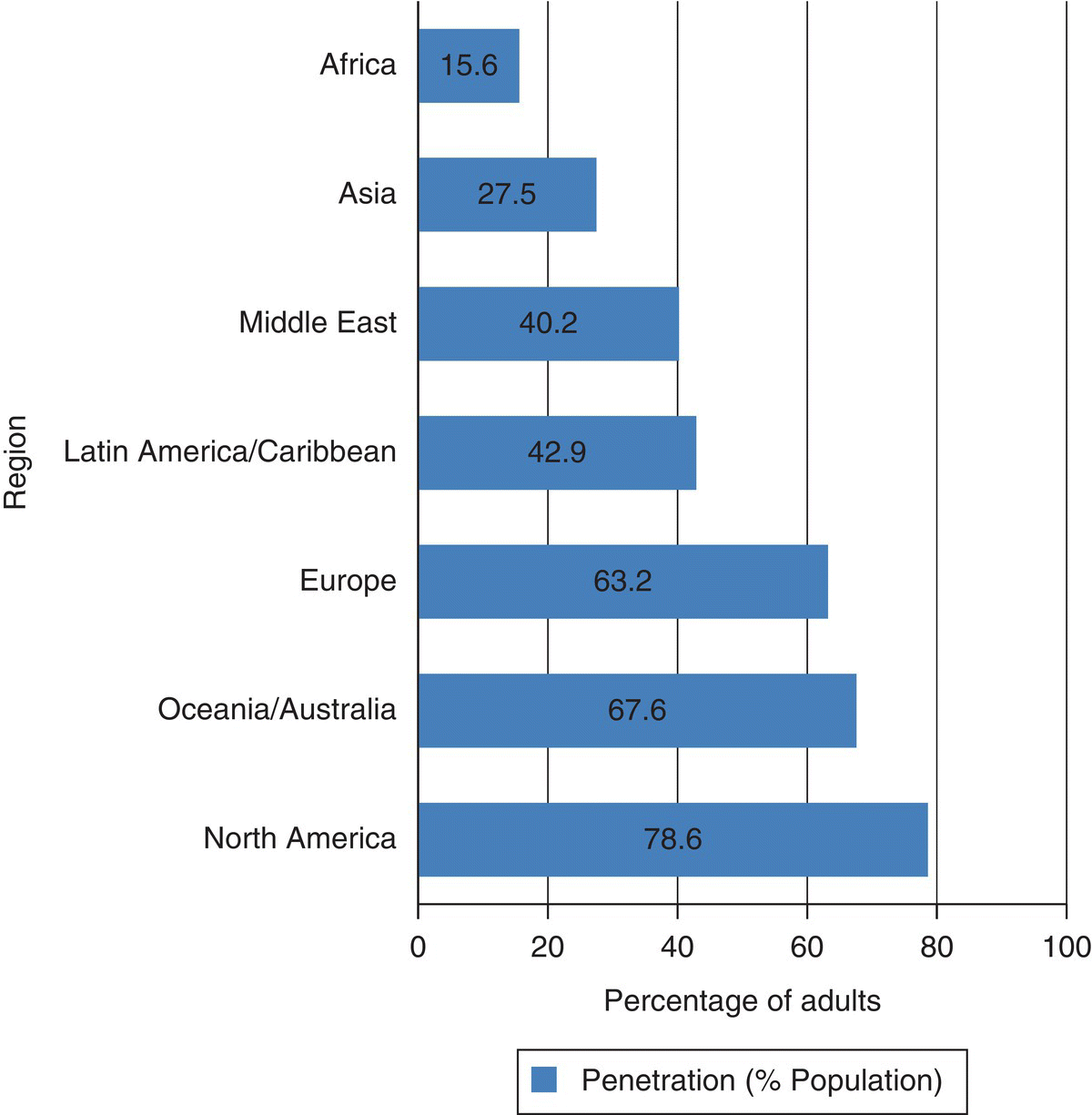

16–24
25–34
35–44
45–54
55–64
65+
Men
Women
% All
Sending/receiving emails
83
87
87
77
69
41
74
72
73
Finding information about goods and services
71
83
81
74
66
34
69
65
67
Buying goods or services over the internet
79
87
84
72
61
32
68
67
67
Social networking, for example Facebook or Twitter
87
78
62
40
24
10
48
48
48
Internet banking
43
69
65
52
43
18
51
44
47
Reading or downloading online news, newspapers or news magazines
58
66
59
49
38
20
51
44
47
Using services related to travel or travel-related accommodation
41
57
55
51
42
22
47
41
44
Playing or downloading games, images, films or music
67
60
46
36
27
12
43
37
40
Listening to web radio or watching web television
56
55
48
37
27
12
44
32
38
Uploading self-created content, for example text, photos, music, videos etc.
60
50
45
32
22
11
36
35
35
Posting messages to chat sites, blogs, forums or instant messaging
60
56
41
28
18
7
35
32
33
Telephoning or making video calls over the internet
45
49
40
31
23
11
33
31
32
Selling goods or services, for example on eBay
27
36
31
22
15
5
24
20
22
Making a medical appointment
7
15
12
12
11
4
11
9
10
Creating websites or blogs
16
11
7
5
1
1
7
6
6
Social media
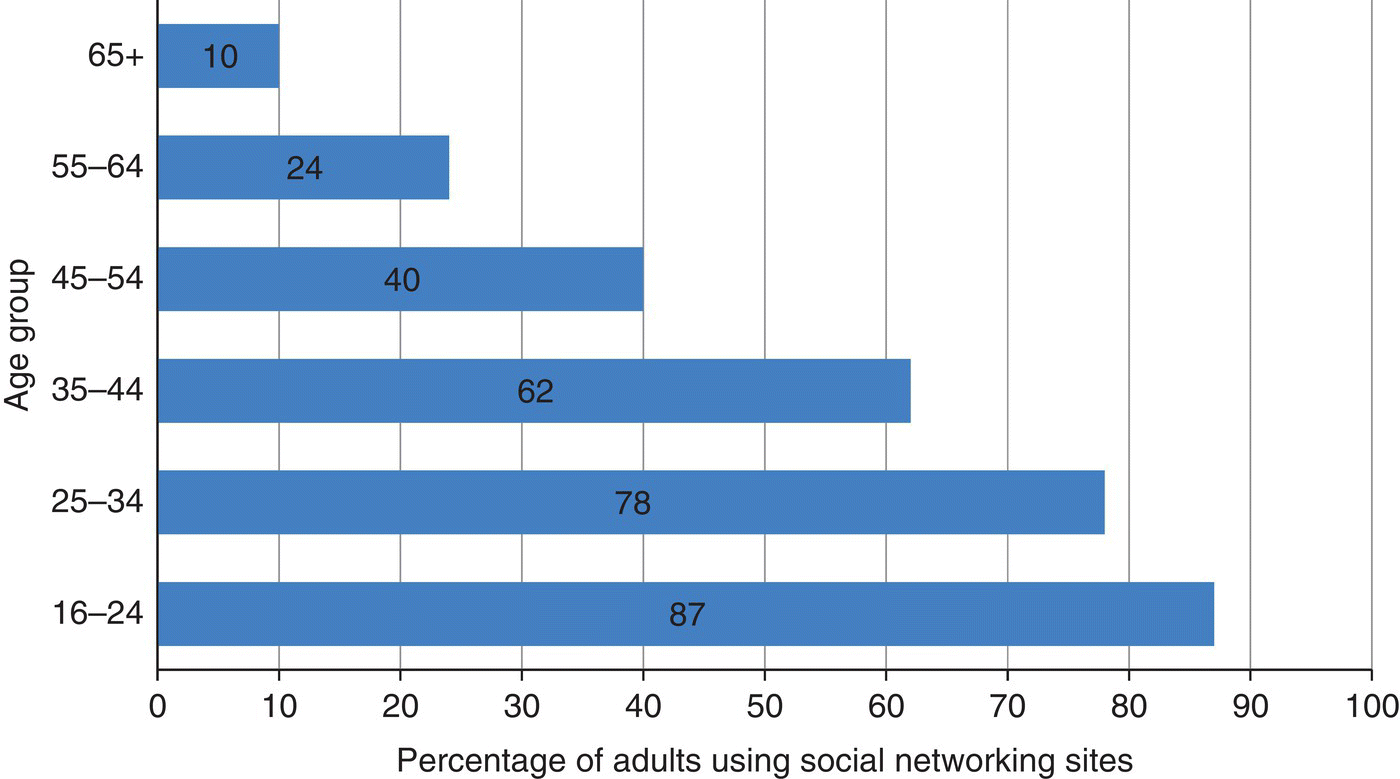
20.2 Integration of different approaches to support effective communication
Sustainability of the food supply
The role of nutrition in early development
Folic acid
Country
Year of introduction
Fortification
Decrease in NTDs
Canada
1998
150μg/100 wheat flour
46% by 2002
Chile
2000
220μg/100 wheat flour
40% by 2002
South Africa
2003
150μg/100 wheat flour
221μg/100 maize flour
31% by 2005
USA
1998
140μg/100 wheat flour
27% by 2000
The role of nutrition in healthy ageing
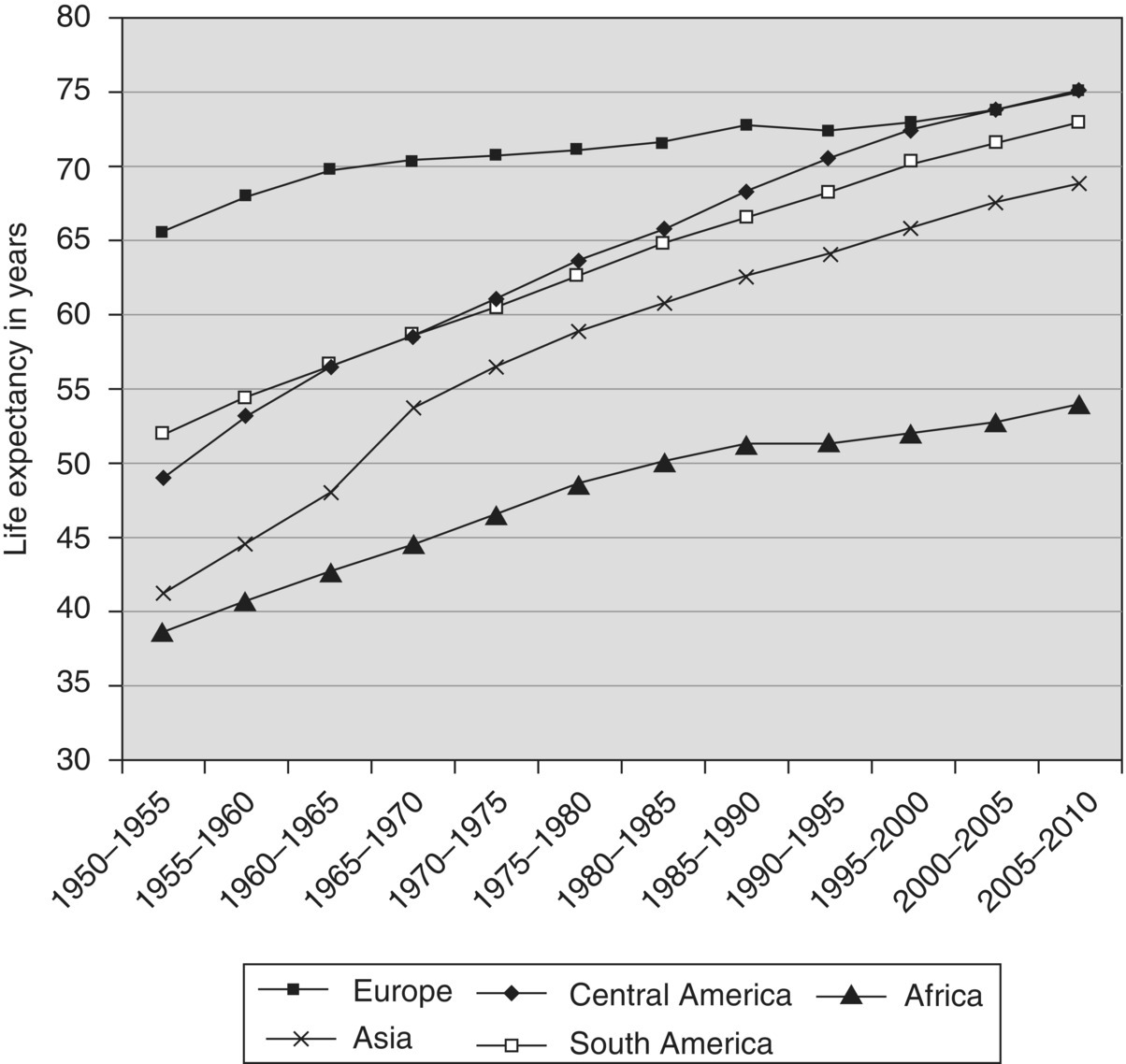
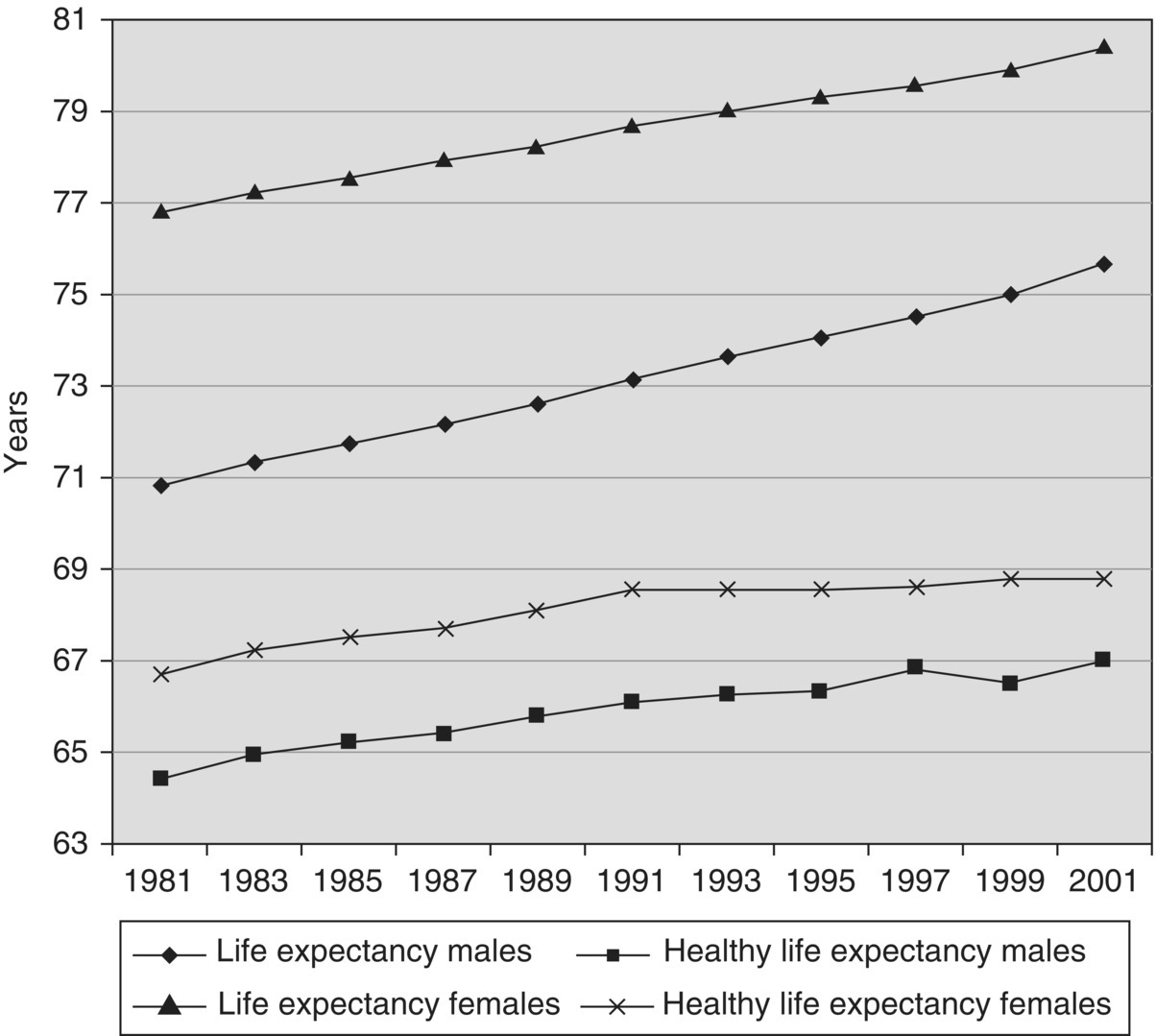
Stay updated, free articles. Join our Telegram channel

Full access? Get Clinical Tree



